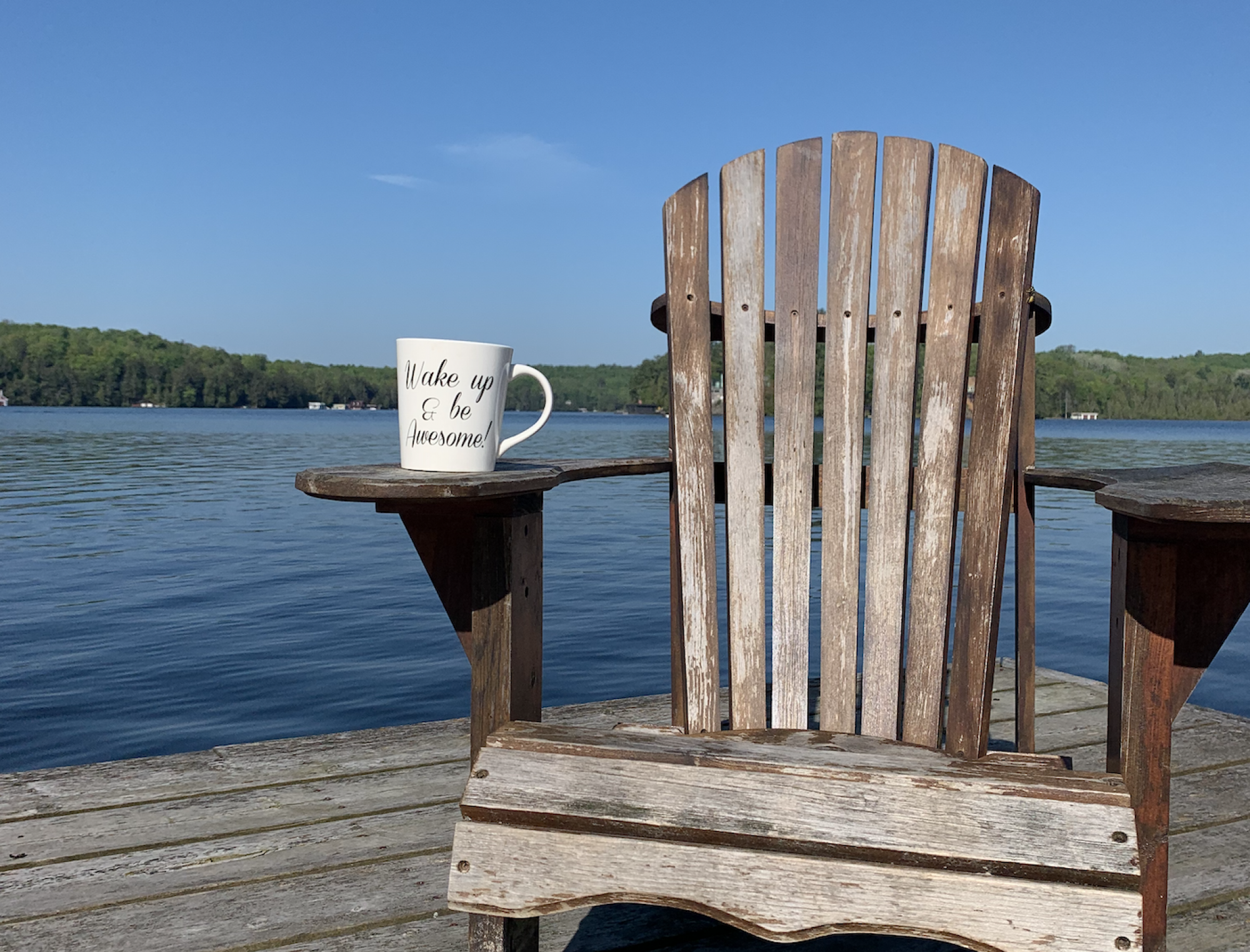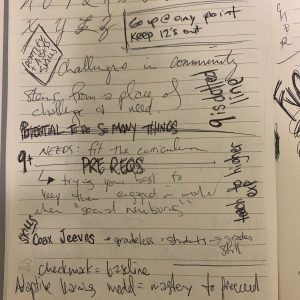I didn’t quite follow the instructions. BUT! I felt a little bit of magic in the air, followed it, and am pretty excited to see where it leads.
GUT—with school size and sphere of influence in mind, I took a broader approach to identifying areas of need at our school. We’re small (~110 students), open to innovation, and—as a member of the Leadership Team—I’ve got a seat at the table from which larger program initiatives need to be explored. My gut initially went to some kind of integrated approach to learning: perhaps in terms of ecological perspectives, skills-based assessment, or balance and holistic development. However, these are all things that we are already trying to focus on at RLC. So, I shifted focus to how we might make change at a program level that supports the great things we are already doing, and opens the door to additional possibilities. I am currently exploring the potential for vertical integration/multi-age programming as a means to enhance our academic program offerings, student learning, and teacher development. 
(Fun fact: 3 is a commonly used year spread for vertically integrated/mixed-age learning communities.)
HUNCH—in order to collect info from stakeholders to inform this idea, I created an open-ended Google form for faculty, and a multiple-choice form for students. I am not confident I asked good questions; I wanted to get some general perspectives about the topic, without making my own position clear, and found I struggled to decide how to do so. I think this is a good first step regardless, and one that I can build upon as I speak to individuals in more detail.
LEARNING—so far, it is clear that there is existing experience and interest in vertical integration among RLC faculty, but that there is also some confusion around what it entails. Moving forward, I need to ensure that the community understands that what we are looking at is more than a split-grade or combined class, and is not based on a “stronger young kids with weaker older ones” model, but rather a true mix. It’s also evident that students of all ages are fairly stuck in the mindset that younger teens don’t have anything to teach older ones, which is something I’m hoping this kind of action plan could debunk. Framing and frontloading will be important as I continue to explore options. Finally, I am optimistic that this could be a platform through which some other cool ideas, such as cross-curricular learning, leadership development, movement towards a skills-based mindset from a grades-based one, etc, could be developed. With a little help from my friends, I’ve begun to talk through this idea with my action plan in mind, and I am excited to dig deeper. Rather than go into too much detail on that front, here is what the inside of my brain looks like when it thinks about breaking and rebuilding the system:
(I promise that this is my “thinking writing” and I am more legible when necessary!)
Moving Forward—
i. I will have more specific conversations with individuals or groups of faculty/students to garner more of an understanding of how vertically integrated programming could be implemented in a way that meets their needs, and the goals that I am striving for.
ii. I will explore the systemic limitations that might exist on this sort of model. For instance, when and how can students “reach ahead” in a vertically integrated course? Are there time requirements and ways around them? How much of role can prior learning assessment play?
iii. I will explore the factors within RLC as an institution that may govern how, and to what extent, something like this could be done. How will it be scheduled? What integration of options will be presented? For what grade ranges?
I don’t know what this will look like—yet—but it is exciting to think about the possibilities!
Ah. And as proof that I can sometimes write legibly, and because it makes sense to include it, here is my “placemat” in its current form:





@jsheppard We love it when participants go ahead and make this process their own. We give people boxes because most like to work within them but we encourage everyone to break free if they feel it better suites their needs and goals. I love how this is taking shape.
Our school has tied the grade 9 English and grade 10 History courses together so students have class everyday with the same teacher. They weave in and out of the English and History curriculum and finish the year with students getting both credits. I’m not sure if this is what you are looking to do but if you’d like more info I can provide it Saturday. See you then!
@jsheppard – our school is getting away from curriculum to offer some multi-grade learning by having “Future Ready Days” where students are engaging in the design thinking process on a passion project. Each group has 6 students ranging from gr 7 – 12. We started this week and will have a full day scheduled again in February that culminates in a showcase evening for parents ono the solutions the students have come up with. Sounds similar (ish) to what you are considering?
@jsheppard I need you to help me beautify my blog! I love your layout! It is good to make the ‘homework’ from each F2F your own … think if it as guidelines or prompts if you will, guideposts on your journey. I think there is much to be gained from vertical integration whether in a formal or informal classroom context – I wasn’t quite sure which you had in mind here, maybe both? I’ve been noticing in my own practice of teaching design for the first time this year that learning in this type of ‘maker’ / experiential curriculum is rather non-traditional, perhaps in the way you envision a vertically integrated classroom – what I mean is that the skills required in a course like this are not cumulatively gained through pre-requisite after pre-requisite, so the mixing of ages and knowledge bases can work quite well! (We are not delivering the course this way, but I think it would be awesome if we did!)
As I read your post I was thinking about the program that I believe @edaigle ran at RLC, I think it was experiential in nature and ran off timetable? Could this be a place to begin investigating?
Haha, thanks @acampbellrogers! I believe I’m using the blog theme “Twenty Seventeen” but with the default image replaced by a photo of Lake Rosseau last autumn. Thanks for not pointing out that my layout is “so 3 years ago!” [*knee slap!*]
I’m thinking of a more formal opportunity for vertical integration when it comes to my action plan. It is already happening informally as a result of Discovery Days (the program @edaigle developed that you mentioned.) Students have the chance to work collaboratively on their Discovery Projects, so there are always a few who team up with friends who are often in different grades and/or taking different courses. They are starting to realise that there are so many ways to connect subjects and ideas, which is lovely to see! These projects may prove to be good snapshots of how cross-curricular vertical integration works in practice.
What I would like to do is actually build some integrated course bundles into our timetable. I see potential for some compulsory intermediate courses mixing well with senior electives (which we sometimes can’t run as many of as we’d like, simply because we are such a small school.) I’m definitely excited to get deeper into the process of exploring specifics (admittedly, of course, I’ve already been thinking about what bundled courses I think would be really cool!)